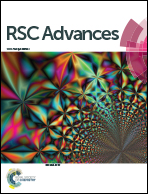Enhancement of Rashba spin–orbit coupling by electron–electron interaction
Abstract
We studied how the electron–electron (e–e) interaction enhances the strength of the Rashba spin–orbit coupling (RSOC) and opens the possibility of generating a spin-polarized output current from an unpolarized electric current without any magnetic elements. In this regard, we proposed a novel design of a graphene-like junction based on the e–e interaction and the RSOC. The results showed that the e–e interaction with RSOC opens a spin energy gap and extremely enhances the RSOC in this spin energy gap. Interestingly, the junction produces a large spin-polarized current and could act as a high-efficiency spin filter device (nearly 100% spin polarization) at room temperature even at low Rashba and e–e interaction strengths. However, with an appropriate design, we showed that RSOC could strongly weaken the spin-polarized current and the spin energy gap, which is solely produced by the e–e interaction, but a high spin polarization persists in some energy ranges.


 Please wait while we load your content...
Please wait while we load your content...